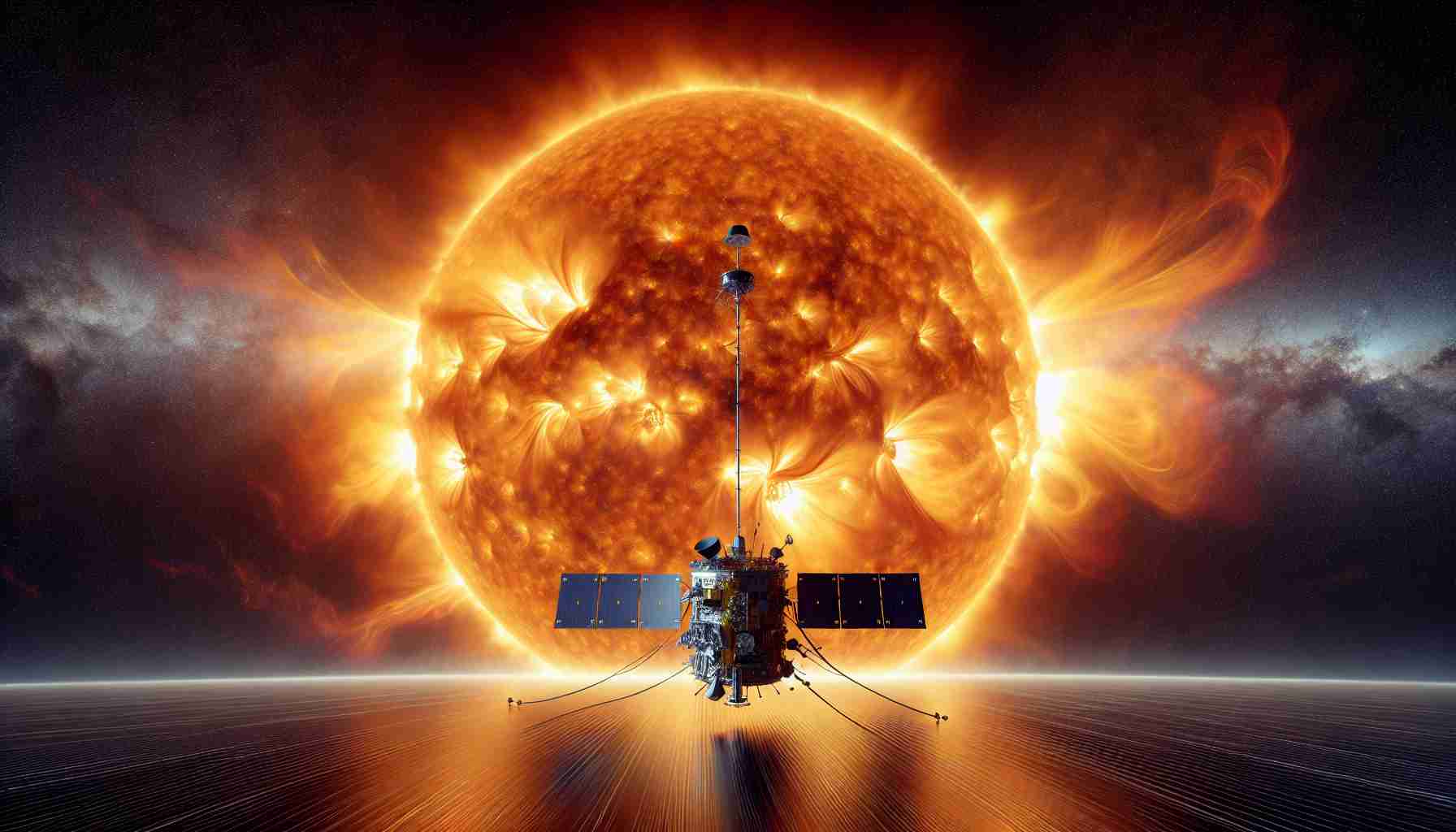NASA has achieved an extraordinary milestone with its Parker Solar Probe, which has successfully completed the closest approach to the Sun ever made by a human-made spacecraft. On December 24, the probe reached a staggering distance of just 6.1 million kilometers from the solar surface, directly entering the Sun’s outer atmosphere, known as the corona.
The operations team at the Johns Hopkins Applied Physics Laboratory in Maryland confirmed the probe’s safety and normal operation after receiving a signal—a beacon tone—just before midnight on Thursday. The upcoming telemetry data, set to be transmitted on January 1, promises to shed light on the probe’s status following this historic journey.
Traveling at breathtaking speeds of up to 692,000 kilometers per hour, the Parker Solar Probe faced extreme temperatures reaching up to 982 degrees Celsius. This groundbreaking mission aims to provide vital insights into the Sun’s behavior. Researchers are eager to analyze how materials in the corona become superheated, trace the origins of the solar wind, and discover the mechanisms that accelerate energetic particles to nearly the speed of light.
Launched in 2018, the Parker Solar Probe has progressively moved closer to the Sun through a series of Venus flybys, employing gravitational assists to tighten its orbital path. This mission continues to revolutionize our understanding of Earth’s closest star, paving the way for future solar research.
Parker Solar Probe: Breaking New Ground in Solar Exploration
NASA’s Landmark Achievement
NASA’s Parker Solar Probe has marked a significant milestone in solar exploration, completing the closest approach to the Sun ever achieved by a human-made spacecraft. On December 24, 2023, the probe reached an unprecedented distance of just 6.1 million kilometers from the Sun’s surface, penetrating the solar atmosphere known as the corona. This remarkable achievement opens up new avenues for solar research and understanding our star’s behavior.
Specs and Features of the Parker Solar Probe
– Launch Date: August 12, 2018
– Distance from the Sun: 6.1 million kilometers (closest approach)
– Maximum Speed: 692,000 kilometers per hour
– Extreme Temperatures: Up to 982 degrees Celsius
– Current Mission Phase: In-depth studies of the solar corona and solar wind
The Parker Solar Probe has been designed with advanced technology and materials that allow it to withstand extreme temperatures and radiation. Its unique heat shield, known as the Thermal Protection System (TPS), allows the spacecraft to operate in such an inhospitable environment.
Innovative Insights Expected
The data collected during this historic flyby is expected to provide groundbreaking insights into various solar phenomena, including:
– Origins of Solar Wind: Understanding how charged particles are emitted from the Sun.
– Heating of the Corona: Investigating the processes that cause the corona to be significantly hotter than the solar surface.
– Acceleration of Solar Particles: Analyzing the mechanisms that can propel solar particles to near the speed of light.
The telemetry data from the mission, expected to be transmitted on January 1, 2024, will provide crucial information about the probe’s condition and the health of its instruments post-approach.
Pros and Cons of the Mission
Pros:
– Pioneering solar research with potential applications for understanding space weather.
– The closest observations of the Sun provide unprecedented data.
– Enhances prediction models for solar activity and its effects on Earth.
Cons:
– The mission involves significant engineering risks operating at such extreme distances.
– High costs associated with the technology and continual operational support.
Market Analysis and Future Predictions
The success of the Parker Solar Probe reinforces the expanding field of heliophysics and space exploration. As we gather more data, scientific insights regarding the Sun’s dynamics will not only enhance our understanding of solar phenomena but also aid in developing predictive models for space weather that can impact satellite operations, aviation, and even power grids on Earth.
As future missions are considered, including potential landers or orbiters close to the Sun, the innovative technologies developed for the Parker Solar Probe will serve as a foundation for next-generation solar exploration missions.
For more insights on solar research and NASA’s ongoing missions, visit NASA’s official website.
